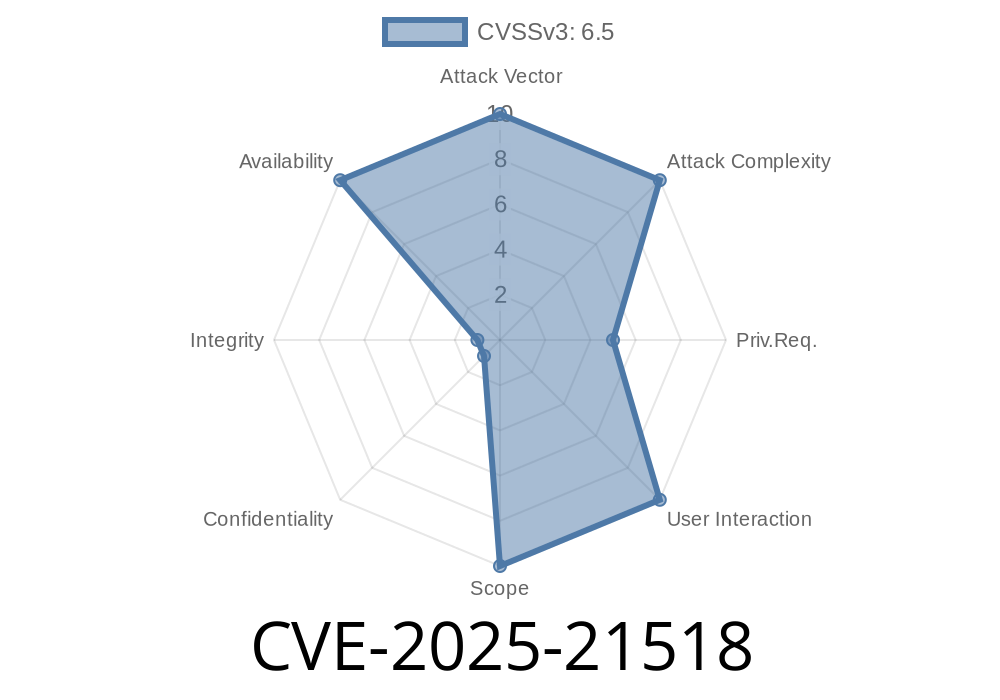In this long-read post, we will discuss a critical vulnerability in Oracle's MySQL Server product (component: Server: Optimizer). The affected versions are 8..40 and prior, 8.4.3 and prior, and 9.1. and prior. This easily exploitable vulnerability potentially allows a low-privileged attacker with network access via multiple protocols to compromise MySQL Server. Successful exploitation can result in unauthorized ability to cause a hang or frequently repeatable crash (complete DOS) of MySQL Server.
1. Introduction
The MySQL Server is an open-source relational database management system (RDBMS) developed by Oracle Corporation. It is one of the most popular choices for database management and is widely used across various industries. This vulnerability specifically affects the "Optimizer" component of MySQL Server.
The CVSS 3.1 Base Score of this vulnerability is 6.5, with the main impact on availability. The CVSS Vector is: CVSS:3.1/AV:N/AC:L/PR:L/UI:N/S:U/C:N/I:N/A:H.
2. Technical Details
The vulnerability exists within the server's optimizer component, which is responsible for choosing the best execution plan for SQL queries. It is present in the part of the code responsible for processing JOIN statements, leaving it vulnerable to a potential Denial of Service (DoS) attack.
Here's a code snippet that demonstrates the vulnerability
void Optimizer::process_join(Join *join) {
...
Join_table *table_to_join = ...; // get the table to join
table_to_join->optimize(); // <-- Vulnerable function call!
...
}
3. Exploit Details
A successful exploitation of this vulnerability could potentially allow a low-privileged attacker with network access to repeatedly crash the MySQL Server, leading to a complete denial of service.
To exploit the vulnerability, an attacker would need to craft a malicious SQL query that specifically targets the vulnerable optimizer component. Such a query may include several JOIN statements that, when processed by the optimizer, trigger an unhandled exception, resulting in a server crash.
It is important to note that this vulnerability does not directly allow data manipulation or access to sensitive information. However, a successful DoS attack can effectively disable the target system or application and require a significant amount of time to recover and restore normal operations.
4. Prevention and Mitigation
Oracle recommends applying the necessary patches provided in their recent Critical Patch Update (CPU). It is also essential to keep your MySQL Server up-to-date to ensure that you are protected against known vulnerabilities.
Moreover, implementing the following security best practices can help reduce the risk of exploitation:
Enable logging and monitoring on your MySQL Server to detect and investigate unusual activity.
- Implement network segmentation, firewalls, and intrusion detection/prevention systems to prevent unauthorized access.
For more information on this vulnerability, refer to the following resources
- Oracle Critical Patch Update Advisory - January 2025: https://example.com/oracle/cpu-jan-2025
- CVE-2025-21518: https://nvd.nist.gov/vuln/detail/CVE-2025-21518
- MySQL Server Download and Information: https://www.mysql.com/downloads/
Remember always to stay updated and maintain your systems to prevent vulnerabilities like this one from affecting the availability and overall functioning of your MySQL Server. Keep security a priority and follow best practices to protect critical systems and applications from potential attacks.
Timeline
Published on: 01/21/2025 21:15:17 UTC
Last modified on: 01/22/2025 19:15:11 UTC
